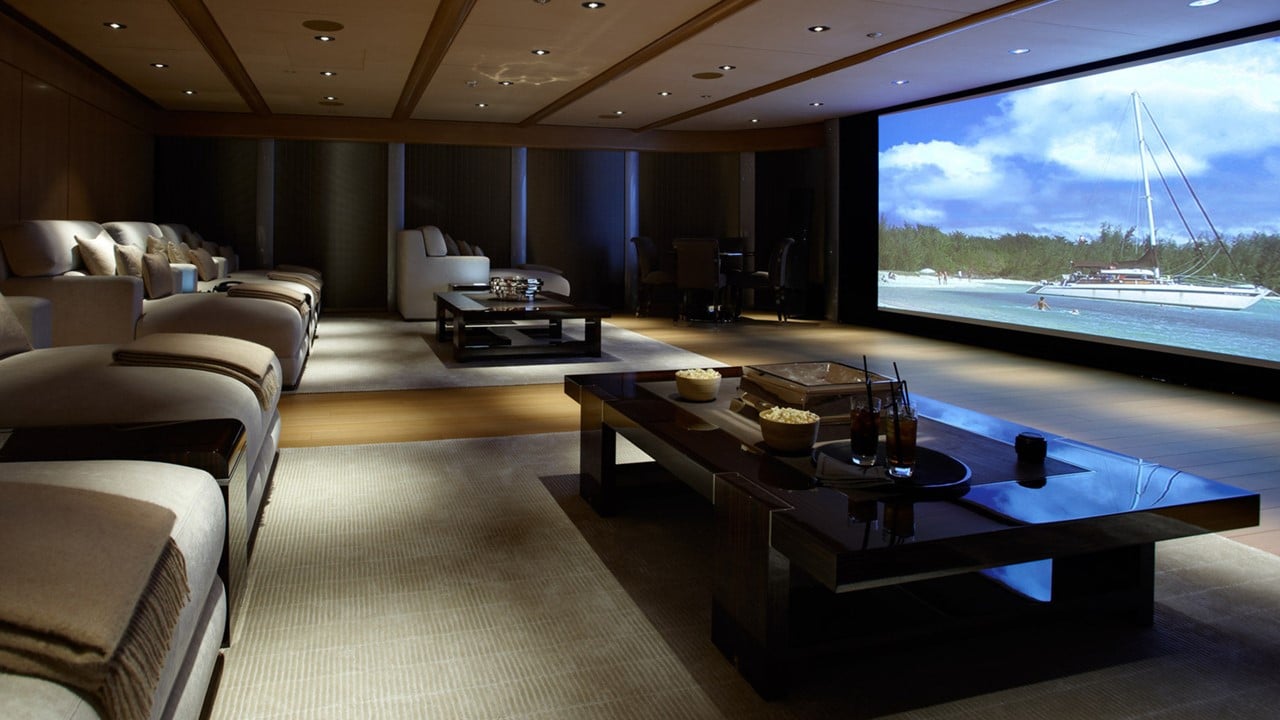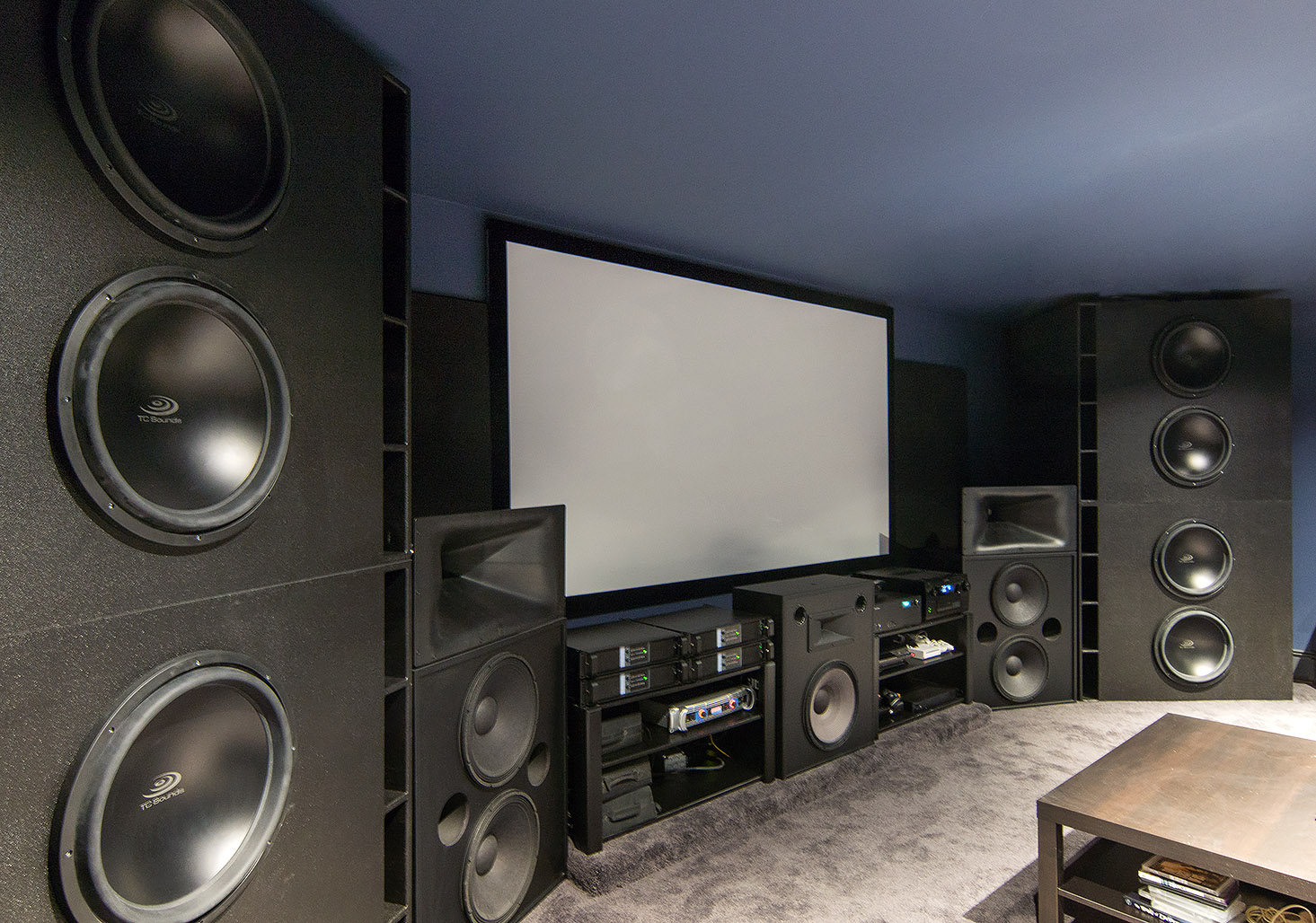When it comes to assembling a home theater system, one of the most components is the subwoofer and this isn’t an item you want to choose based on price or convenience.
The subwoofer affects the quality of sound for the rest of the system, so it’s important to choose a quality product. In choosing a subwoofer that will complement the rest of your system, a look at the key features and the way in which various brands have performed throughout time.
Below, we’ll look at a number of things to look for, when choosing the right subwoofer for your home. While you’re considering these key points, think about how they will interact with the rest of your home stereo system and with your living quarters in general.
1. Size Matters
Subwoofers come in a variety of sizes. While it may seem as though this is just a matter of aesthetics or a way of offering a wider selection, there’s more to a subwoofer’s size than just appearance and cost. In fact, the generally accepted rule is that the larger the product, the deeper the sound. [pullquote]Of course, we all want a deep, rich sound, so why would anyone opt for smaller subwoofers?[/pullquote]
There’s a reason for that, too. You don’t want that deep sound to overpower the rest of your system, altogether. The key here is to go for a subwoofer that will complement the rest of your speakers. For instance, smaller bookshelf speakers would require nothing larger than a 10″ subwoofer. Meanwhile, tower speakers could benefit from the added boost of a larger subwoofer, 12″ or larger would be preferred.
2. Down-Firing Or Front-Firing?
In making this decision, it’s important to know where you’ll be putting the subwoofer and what effect you would like for it to produce. If you’re going to place it near your front two speakers, the front-firing subwoofer is the best style to choose. This will push the bass sounds directly toward you.
However, you may opt to place it in a corner or on a side wall. In that case, a down-firing subwoofer would be the way to go. The bottom position of the driver will push the sound out against a flat surface and distribute the sound more evenly throughout the room.
IMAGE: ROYAL SIGNS
3. Jazz And Classical Or Hard Rock And Hip-Hop?
Another feature unique to quality subwoofers is the option of a sealed or ported enclosure. Sealed enclosures, often referred to as acoustic suspension, and are often seen as providing a better quality sound, because they keep the bass well-defined. By keeping the air from flowing through the box, the subwoofer is much more responsive, but, on the downside, they also soak up more power.
A ported box has a vent that allows air to flow through the box, which does enhance the production of low-frequency sounds. Additionally, ported subwoofers also utilize less power. The result is that you’ll get a more powerful sound, if a less accurate one.
Generally, forms of acoustical music like jazz and classical will sound superior with a sealed enclosure, while EDM, hip-hop, and hard rock listeners will prefer a ported subwoofer.
4. Passive Radiators Enhance The Listening Experience
While browsing the various types of subwoofers, you might notice that some products come with additional woofers. Called passive radiators, they are unpowered woofers that move in conjunction with the powered subwoofer for the purpose of enhancing the sound. This is how these kinds of subwoofers can produce a big sound from a smaller device.
5. Speaking Of Power
[pullquote]A powered subwoofer does more than most people realize, containing its own amplifier that makes additional devices unnecessary.[/pullquote] When using a powered subwoofer, employing the use of an amp through the receiver is redundant and a waste of power, as it doesn’t really enhance the listening experience.
The amps and drivers in the subwoofer have been purposely designed to work in tandem, so the listener is already getting the best possible quality of sound. The implication is that even a small subwoofer will deliver plenty of bass. An exception to this rule might be in providing music for a large room. In that case, a larger subwoofer would be preferred.
6. Presets And Fine Tuning Your Subwoofer
Many subwoofers come with enhanced features, like preset buttons for getting a more distinctive sound from your system. Most presets include settings for movie, video game, rock, jazz, sporting events, news, or night mode listening.
Additionally, some subwoofers come with options for adjusting the sound for the room, optimizing for the space in which the sound is delivered. Settings for this option include living room, dining hall, theater, stadium, open field, etc. By fine-tuning this option, the subwoofer takes advantage of the acoustics of the particular environment, preventing a flat sound.
7. Going Wireless
As we move further into the digital age, wireless technology becomes more and more accessible from kitchen appliances to our home offices. There are many ways to adapt wireless technology to our stereo systems. First, many subwoofers come with remote controls, which provides a definite advantage in controlling the output of the bass across a selection of music. This allows you to control the previously mentioned features and to adjust volume levels without having to go back and forth to change the settings directly on the subwoofer.
As for connecting the subwoofer to the stereo receiver, few products currently have this feature, though there are a few brands that offer wireless subwoofers. Under most circumstances, a cable connection is required. If your chosen subwoofer doesn’t have a wireless feature, universal adapters can be used to turn it into a wireless adapter. The added kit may be worth the price, giving you greater choice in where to place the subwoofer in your home.
8. Two Subwoofers Are Better Than One
Many people don’t realize that you can connect more than one subwoofer to the same system. By doing this and placing the subwoofers in opposition within the room, you’ll spread the bass sound out more evenly. To find out if you can add an additional subwoofer to your system, look at the specifications. A 7.1 channel system has a connection for just one subwoofer, while a 7.2 channel system will support a second unit.
Two subwoofers enhance the sound by eliminating the null space created when low-frequency sounds hit a wall or other flat surface. Low-frequency sound waves often bounce back to impact the original source of the sound wave, but, by incorporating a second subwoofer, you’re compensating for that by adding an additional sound wave. This eliminates the dead zone you might observe in certain parts of the room.
9. The Top-Rated Contenders
- Klipsch Sub-12HG Synergy Series 12-Inch 300-Watt Subwoofer
Voted best overall in quality, this subwoofer offers the deepest bass sound with the lowest rate of distortion. - Polk Audio PSW505 12-Inch Powered Subwoofer
This is the best-budgeted offering and has the unique feature of being eco-friendly. After 15 minutes of inactivity, this subwoofer will power down. - Yamaha YST-SW216BL Subwoofer
Creating a home theater? This is the best option for that specific setting, especially with a high cutoff filter and noise reduction. Clear and deep “booms” from action films will shake the windows. - ELAC S12EQ Debut Series 1000 Watt Powered Subwoofer
The best of the best. This high-end subwoofer puts out 1,000 watts of power with a sound so distinctive and forceful that you won’t believe it’s coming from a 17 x 17 x 17-inch box. - BIC America F12 12-Inch 475-Watt Subwoofer
Speaking of output, this subwoofer was added to the list specifically for its ability to produce big sounds from a smaller box. A 25 – 200Hz frequency range enables this product to adapt to most styles of music. - Klipsch Reference R-112SW Subwoofer
Spun copper occupies the center of this subwoofer, offering high-quality sounds, even at super low frequencies. Additionally, this is one of those wireless subwoofers that are coming into high demand. - Martin Logan Dynamo 700W 10” Subwoofer
Another wireless offering, this product doesn’t sacrifice quality for mobility. One word of warning, however. The subwoofer is not shielded, so don’t place it close to television screens or computer monitors. - Klipsch R-110SW 10” 200 Watt Subwoofer
A smaller device with just 200 watts, this one may be better suited to smaller systems. It does, however, provide the best frequency range from 27 – 150Hz. - BIC Acoustec PL-200 Subwoofer
Another subwoofer specifically designed for a home theater, this product is also budget friendly, offering families a more economical choice. - ELAC S10 Debut Series 200 Watt Powered Subwoofer
Here, we have another choice for the best overall subwoofer. In addition to providing quality sound at a wide range of frequencies, this subwoofer also comes with its own smartphone app.
Wrapping Up
These are just a few of the best-rated offerings. Armed with more knowledge about the features and important factors of subwoofers, you can now make a more informed choice that will help you build your best possible stereo system.
For more sound and speaker-related articles and information from us here at Bit Rebels, click here!


COMMENTS